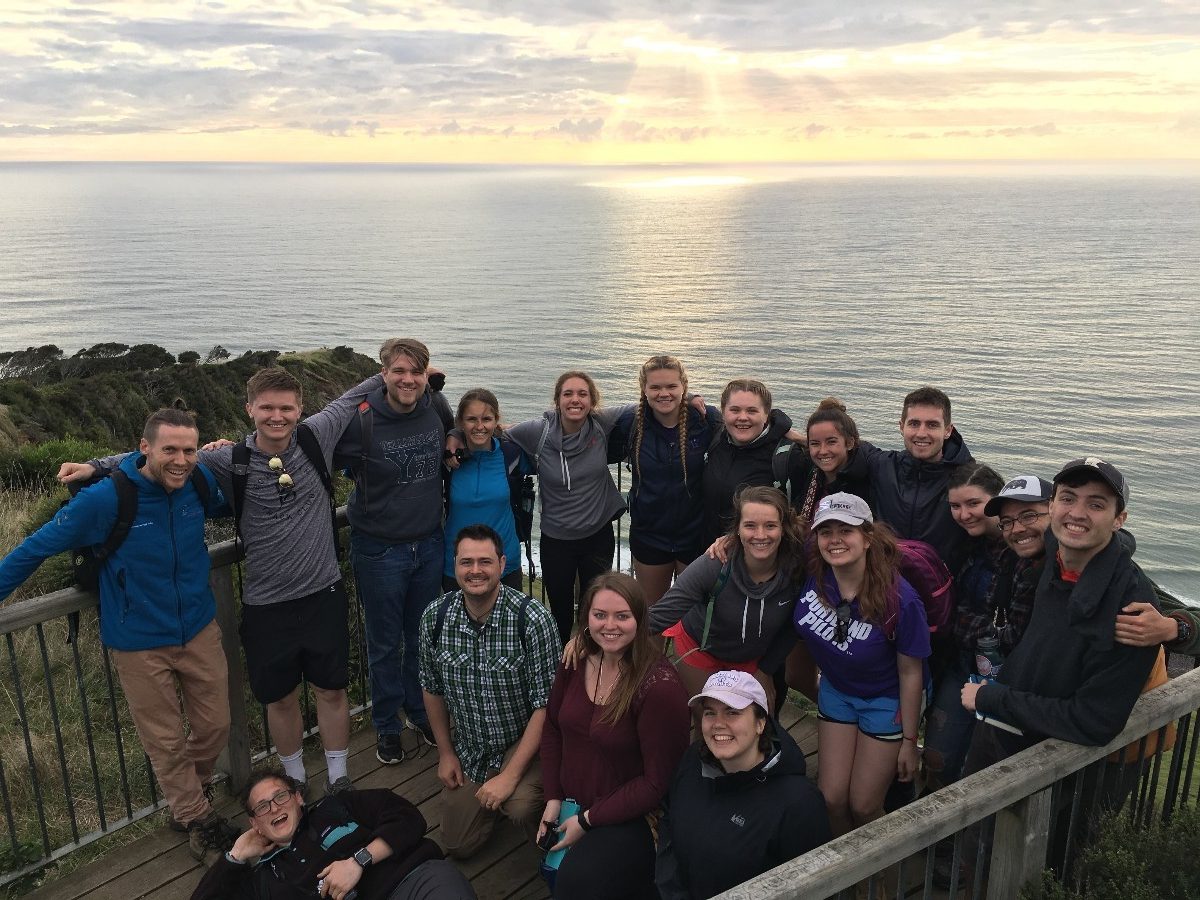The group has been plunged into an intense program since ending orientation. As Andrew discussed in a previous post, we have been starting to get the initial building blocks for Te Reo Maori. This has been very challenging for everyone involved but also extremely rewarding in the learning experience since language is one of the most illuminating insights into the thought processes of another culture. After two nights of basic language learning, our guide Tiaki revealed to us that we would be spending a few hours in an immersive Te Reo Maori language nest that was hosted at the marae. This place was not only the sacred space where the iwi (tribe) remembers their ancestors and their past, but it represents the future and revival of Te Reo Maori. This made me consider the deeper meaning behind the spaces that we had been encountering and the tapu (codes of conduct) associated with them. Maori culture is intensely focused on the connection to the whenua (pronounced fen-oo-ah), or the land, so it’s vital to understand the sacredness associated with the ground we live upon.
Much like the first day at the kokiri, we were welcomed onto the marae (mar-aye, a sacred gathering place) in a traditional fashion with the calling song and the return song of gratitude and peace. The purpose of this ceremony is to welcome the waiwaitapu– sacred legs that have never tread this land– and make the foreign become something familiar. As we crossed the marae a te a– a space designated for conflict and challenge– we silently took in the intensely spiritual energy of the ceremony, preparing ourselves to be integrated into this fully immersive language scenario. We were lead into the marae a rongo– the realm of peace– where we completed the powhiri (po-firi) and had the privilege of watching our own Connell take on the challenge of reciting a speech in Te Reo Maori (that was written and learned within 12 hours) with great poise and courage.
The time at the marae was spent making introductions which is uniquely tied to the spaces important to our identities. When introducing oneself, you state your mountain, your body of water, your location, and finally your name. For example, mine is as such: Ko Pikes Peak te maunga, ko Pelican te roto, no Colorado a ho, ko John a ho. Taking a wider view of the places integral to oneself is a wonderful thing because you truly elevate your existence and importance to something greater than yourself, incorporating not only your ancestors into your sense of self, but also the environment that raised you up from birth. Part of that Maori perspective is also being a good caretaker for that land. This was characterized by the work we did on the marae to upkeep and maintain that space. It was a beautiful and powerful experience in reclaiming a place for the indigenous culture to continue to thrive in the home of their ancestors in a mostly silent atmosphere, paying constant respect to both the whenua and the tangata (the people).
Tiaki described to us the symbolism within the Maori culture surrounding the marae as a space of contrasting feminine and masculine ideals, creating constant reminders that our roots, our power, our strength, our entire being as people– our mana– is tied to the environment and world we come from and the love that our ancestors had for their descendants and the land they bestowed upon them. We as people are so inexorably tied to the land and our modern world has become so detached from our literal and metaphorical roots that we forget to care for the whenua that has provided so much for us. The purpose of the marae for us was to humble ourselves in front of so much power and ancestry and you could tell the palpable effect the time there had upon the group.
The notion of good stewardship and environmental attunement continued in the afternoon with some time spent on the legs of Karioi, the sacred mountain of Whaingaroa (people from our hosting iwi identify as Karioi te maunga). Though the summit and trails on Karioi are currently closed due to being under threat of myrtle rust that kills some of the iconic native trees, we sat in a field overlooking the ocean to discuss more in depth the concept of mana and how that is deeply connected with the whenua. Being on Karioi was a powerful feeling for this discussion because the mountain, in local Maori folklore (which varies from iwi to iwi), is a strong feminine being, laying on the coast and staring at the stars, and she symbolizes the strength of the feminine power within everyone.
Tiaki challenged each of us to consider what it is that we think of as our essential identity and the building blocks of who we are as people. During this time, each person had five minutes to speak stream of consciousness and simply be heard for what they are. In many of these conversations, connections to family members, experiences within nature, faith based spirituality, values, and emotional stories crucial to the creation of personal mana were shared. An experience in true mindfulness and self-discovery, I felt completely overwhelmed with a sense of peacefulness and, as Tiaki put it, of “feeling simply okay” with our place in the world.
I think, at its core, that is what this trip has been about for all of us Wayfinders: finding our own mana–– the power within ourselves bestowed upon us by our ancestors, friends, personal mountains, communities, life-giving waters–– and utilizing it in our own ways to make the world a better place for everyone.
-John Herrmann
